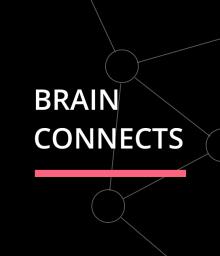
In the human brain, 86 billion neurons form more than 100 trillion connections with other neurons at junctions called synapses. Scientists are now working on an ambitious effort to develop technologies to map these connections across the brain, from mice to humans. These detailed wiring diagrams can help uncover the logic of the brain’s neural code, leading to a better understanding of how this circuitry makes us who we are and how it could be re-wired to treat brain diseases.
Today, the National Institutes of Health announces the third transformative project supported by the Brain Research Through Advancing Innovative Neurotechnologies® (BRAIN) Initiative called BRAIN Initiative Connectivity Across Scales (BRAIN CONNECTS). This program complements two previous large-scale projects outlined in the BRAIN 2.0 report, which together, aim to transform neuroscience research by illuminating foundational principles governing the neural circuit basis of behavior and informing new approaches to the treatment of brain disorders.
The initial round of BRAIN CONNECTS awards supports 11 grants projected to total $150 million over 5 years. The projects aim to develop technologies to comprehensively map neural connections in both humans and laboratory animals. The awards support diverse research teams with collaborators at over 40 universities and research institutions across the globe. Over the next five years, researchers will leverage cutting edge technology to image and analyze brain connectivity with unparalleled speed and resolution. Research teams will develop pipelines for data collection and analysis, with the capability of scaling up to map full brain-wide networks in larger human brains. Another aim is to develop approaches that are efficient and cost-effective so that ultimately, researchers around the world can work on mapping many brains at once, much like how the Human Genome Project revolutionized genetic sequencing by making sequencing technologies more routine, affordable, and accurate.
The projects will develop complementary brain mapping technologies, each with a different application. For example, researchers will develop ultra-high speed electron microscopy methods and use advanced machine learning techniques to digitally reconstruct neurons and their synapses in 3D and identify cell types based on molecular signatures. Other teams will develop novel DNA sequencing tools to “barcode” and trace single neurons across the brain. Projects will also use some of the world’s strongest MRI magnets and newly developed X-ray sources, 100 times more powerful than any in existence, to visualize circuits deep inside the human brain.
Mapping the brain across species will lead to new knowledge about the human brain and provide insights into brain diseases. In the mouse, mapping individual neurons and their synaptic connections at the nanometer scale will help scientists discover basic wiring principles and test new hypotheses about neural circuit function. In humans and non-human primates, mapping the fibers that connect brain regions will inform the next generation of diagnostic brain imaging and therapeutics, such as deep brain stimulation technologies to treat Parkinson’s disease, mental disorders, and other brain disorders.
The goal is for BRAIN CONNECTS to allow scientists to test new hypotheses about human brain circuit function, potentially laying the foundation for more precise diagnostics and therapeutics for devastating brain diseases.
Eleven grants support projects across three themes:
Electron microscopy pipelines to map the mouse brain
- A Center for High-throughput Integrative Mouse Connectomics
- Center for a Pipeline of High Throughput Integrated Volumetric Electron Microscopy for Whole Mouse Brain Connectomics
- Rapid and Cost‐effective Connectomics With Intelligent Image Acquisition, Reconstruction, and Querying
- Multi-beam Transmission Electron Microscopy of Iteratively Milled Semi-thick Tissue Sections
- PatchLink, Scalable Tools for Integrating Connectomes, Projectomes, and Transcriptomes
Developing DNA sequencing tools to “barcode” and map neurons
- Comprehensive Regional Projection Map of Marmoset With Single Axon and Cell Type Resolution
- Mapping Brain-wide Connectivity of Neuronal Types Using Barcoded Connectomics
- Synaptic Resolution Whole-brain Circuit Mapping of Molecularly Defined Cell Types Using a Barcoded Rabies Virus
Novel imaging methods for human and non-human primate brains
- Center for Mesoscale Connectomics
- The Center for Large-scale Imaging of Neural Circuits (LINC)
- Mapping Connectivity of the Human Brainstem in a Nuclear Coordinate System
Additional resources:
- BRAIN 2025: A Scientific Vision
- The BRAIN Initiative® 2.0: From Cells to Circuits, Toward Cures
- The NIH BRAIN Initiative Transformative Projects
